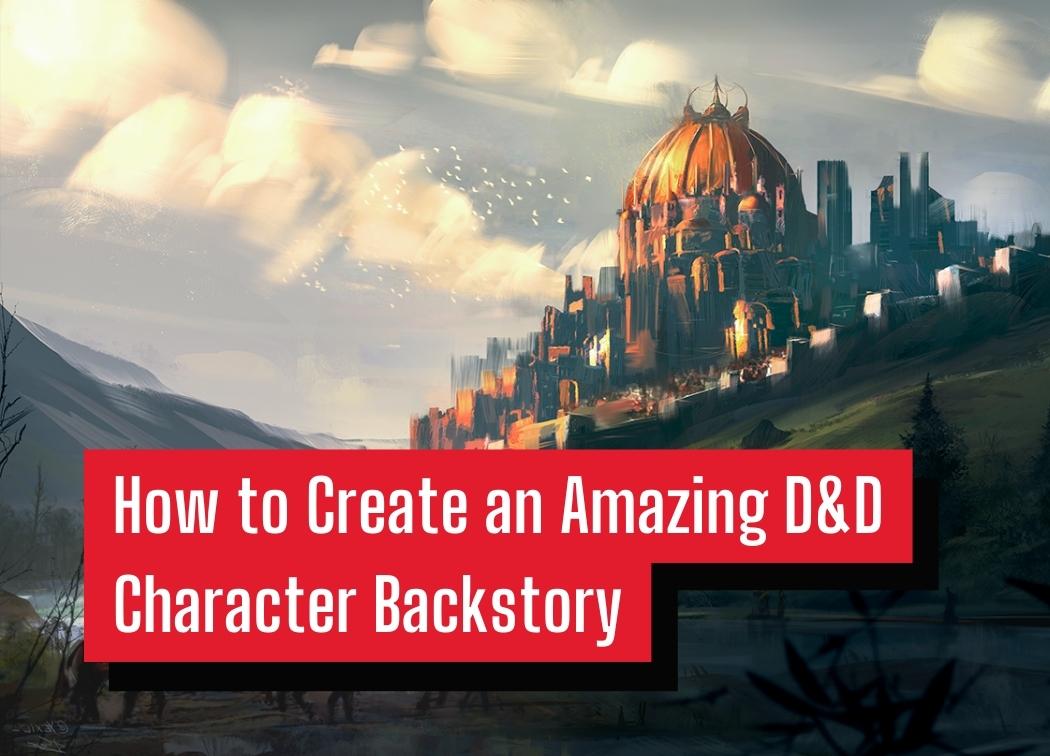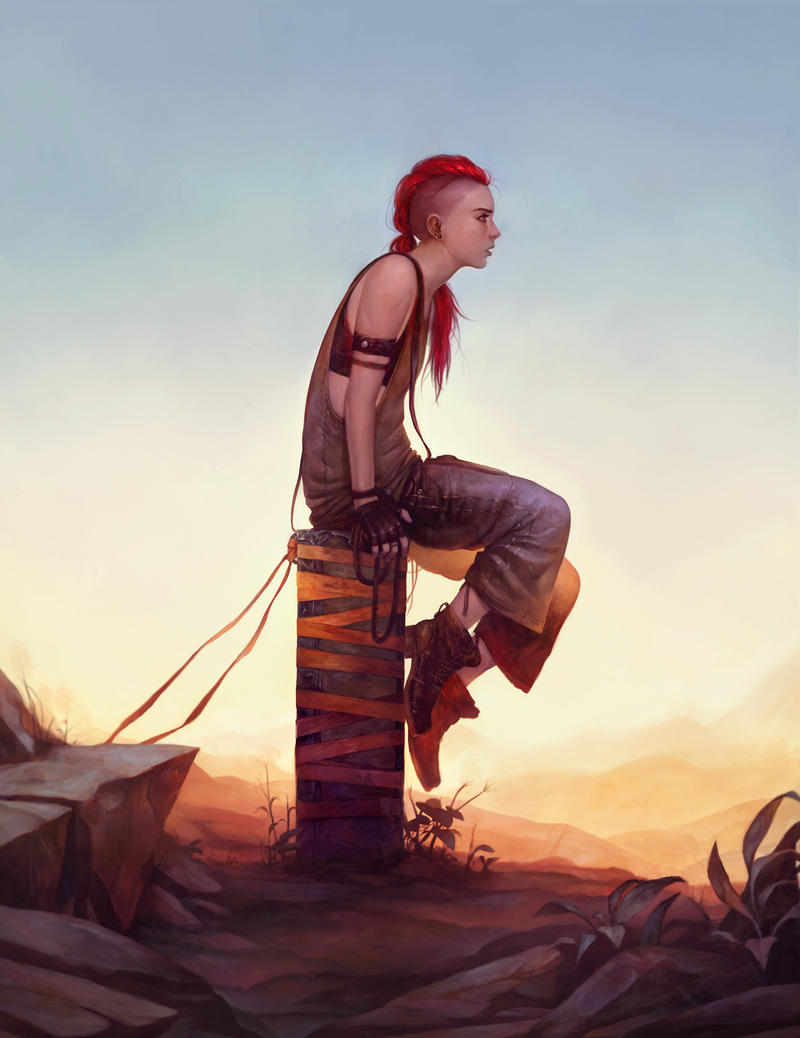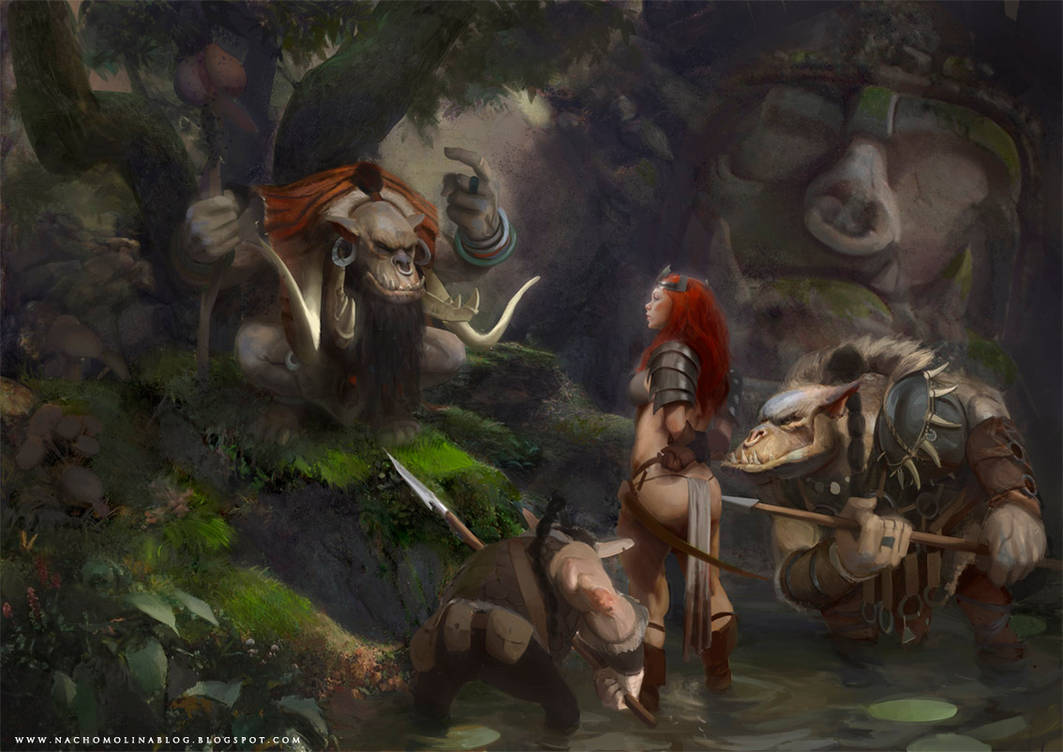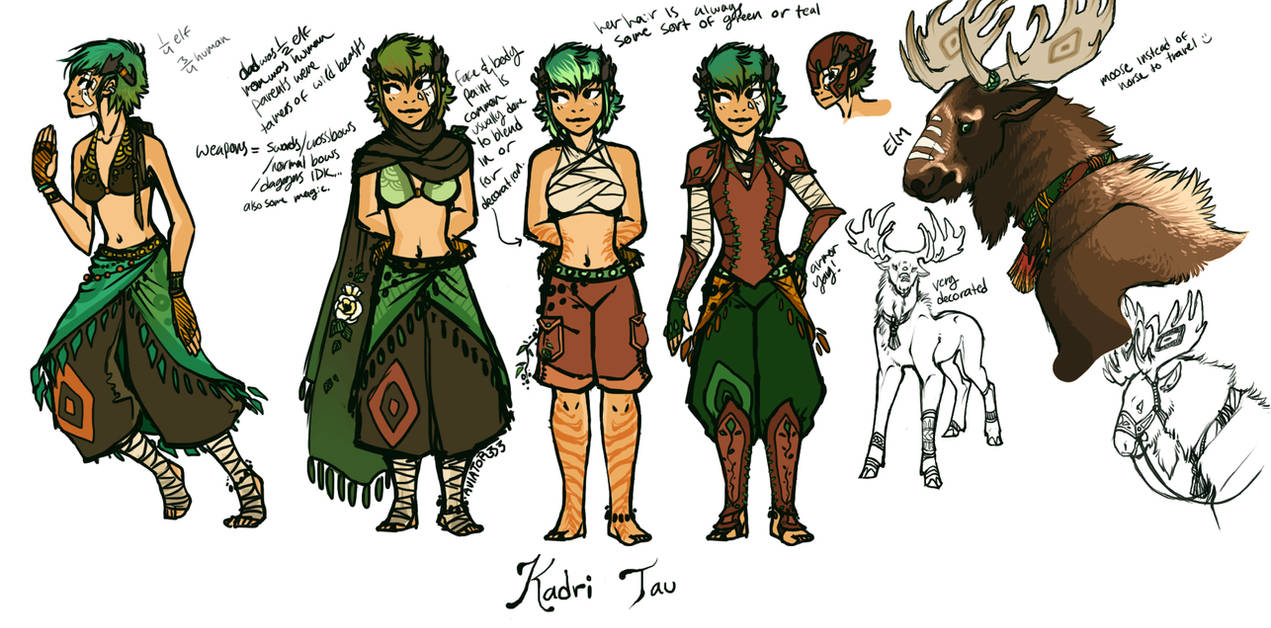How to Create an Amazing D&D Character Backstory

It’s difficult to create an amazing D&D character backstory. I’d wager that most of us that play D&D and other RPGs aren’t professional writers or storytellers. Thankfully though, you don’t need me to make a great backstory for your next character!
Think of your backstory as the foundation of your character. This is who your character was before they set off on the adventure. It could entail their home life, a major life event, their profession, or all of the above.
No matter what your backstory is, it’s going to have some major influence on who your character is now. How they act, what they believe in, and of course their quirks and flaws. Details like these are what separate a dull, plain character from a fantastic one that’s fun to play as and interact with.
Your backstory is only going to be a couple of paragraphs at most, but you must get it right. First, let’s begin with outlining. From there we’ll fill in all of the details to make your character more unique and relatable.
Create an Outline During Character Creation
Race – Your Culture and People
For your character, their race isn’t a choice. For you, it is though. When you go to create your character you should figure out what type of character you’d like for them to be.
There are more human-like races and monstrous races. This should be your first distinction when selecting a race for your character as it will have a trickle-down effect on the rest of your character’s backstory and personality.
Playing a monstrous race like a kobold or a bugbear might make you more of an outcast in civilization, but playing a monstrous race can have its rewards despite this. For one thing, these races tend to have access to more unique abilities compared to their humanoid counterparts.
Regardless, your character’s race is not just what they look like. It’s also their culture, people, and history. This may not have any direct effects on your character and their backstory, but they may still be influenced by them. For example, they may have unique traditions based on their culture that can spark role-playing moments for the table during long rests.
In D&D some races are naturally evil in specific settings. Does your character break the mold, but struggle to do so sometimes? Do they fully embrace their typical alignment, for better or for worse?

Class – Who You’ve Trained to Be
Your class and archetype say a lot about your character. Unlike your race, your character typically has more of a choice of what class they want to be. Someone who has spent their life training with various weapons will become a fighter.
You can learn a lot about your character based on their choice of class. What they use for combat, what spells they lean towards, and what their archetype specializes in can give you tons of information about your character’s personality.
Some classes like the sorcerer are more about your innate abilities. They didn’t necessarily train to become who they are. This isn’t a bad thing at all it can be a phenomenal hook for your character’s backstory.
One example of this is a Wild Magic Sorcerer who grew up being unable to control their powers. It’s gotten them into a slew of trouble and they’ve gone to great lengths to try to control their wild magic surges. As they go about their journey they gain more and more control, but their outbursts of magic can still cause disasters if they’re not careful!
Background – How You Previously Lived Your Life
Choosing a background has a decent amount of mechanical weight on your character. It can give you proficiencies, equipment, and special perks. More importantly, it gives you a lot of information about your character’s backstory.
Who were you before you became an adventurer? Maybe you were a blacksmith or a soldier. Whoever you were and whatever you did surely shape the way you view or viewed the world. Perhaps its influence was part of the reason why you set off to become an adventurer.
Select a background that makes the most sense for the character you’re trying to create. Optimization is great, but your backstory should never suffer for it. Pick the background that will give you the most fun and interesting character you’ll want to play.
In my character builds I always try to balance out optimization and flavor. It tends to work pretty well in my opinion!
Writing Prompts
If you’re still having some trouble thinking up a good outline there are plenty of writing prompts that you can use. A writing prompt can be a list of simple questions to help you dig into your character’s backstory, or it could be a few specific questions meant to generate a very specific answer.
I prefer to use a large list of simple questions for my backstory writing prompts. I typically have trouble getting started with writing a backstory, so to have something to point me in the right direction helps me. Here’s a great one specifically made for D&D backstories.
I love this list because it asks a lot of mundane questions that you wouldn’t normally think about. Your favorite food or drink can tell a lot about you, but it can also make your character more relatable.
Character Generators
I’ve mentioned how much I love generators many times before. They’re great for making treasure hoards, random encounters, and even dungeons. Character backgrounds and backstories are no exception!
One of my favorites is Who the fuck is my D&D Character?The name and flavor are a little bit cringey, but it’s an excellent backstory generator! It spews out your class, race, background, and a short bit of your backstory. Everything is completely randomized.
You can pick and choose what parts you like and use those, or you can keep rerolling until you land on a character that you’d like to play. Once you figure out who the fuck your D&D character is you’re ready to dive deeper and make them more interesting and unique.

Make Your PC Unique
The 5 Ws
The 5 Ws is a set of questions that are used in information gathering or problem-solving.
- Who?
- What?
- Where?
- When?
- Why?
As you can tell, they are the most basic and broad questions you could think of, but each answer can be used as a broad brush stroke on a canvas. They help build your backstory from the ground up.
In essence, you’ll use the 5 Ws to create a great D&D character backstory in the same that you could use writing prompts and character generators. Ask yourself each question and what they might be referring to. After all, each question could give you completely different answers depending on the basic outline you’ve already made.
Who am I? Who is my biggest influence? These both use the same W, but each one sparks a completely different idea.
Quirks and Mannerisms
Everyone has a quirk or a mannerism. I’ve talked about how they can make your villains more interesting and relatable. Your PCs are no exception to this. You want your character to feel more real and three-dimensional. That’s what makes for great characters.
Adding a simple quirk or mannerism to your character is easy particularly because you can pull them from your own real-life experiences. For example, I have a habit of getting excited when I talk about something I’m passionate about and will over-explain things and speak very quickly. That’s a quirk!
Your character could have had some problems with authority in their background. This could make them nervous around city guards or they may be more likely to butt-heads with authority figures.
The list is truly endless. It’s a great way to give your character some depth and make your character more believable and relatable.

Flaws
Every good character needs some flaws. No one is perfect. If they were they probably wouldn’t set out on a random journey to become an adventurer. Something in their past life was unfulfilling and they’ve shoved off in hopes of finding a new and better life.
Flaws can be as innocent or as egregious as you’d like them to be. I like to give my characters at least one big flaw that can seriously impact their character. Their lack of self-control or their insatiable greed can be poor traits that get them and their friends in trouble.
Your character will have to overcome this flaw while they are on their journey. They may have to find ways to correct their issues themselves, or their newfound party and friends can lend them a helping hand.
An amazing character grows throughout the story. You can’t grow if you are already perfect. Make your character flawed and imperfect. It sets them up for growth and potentially a hero’s journey.
Avoid Being Completely Cliché and/or Disruptive
Clichés are cliché for a reason; they work! They are backstories or tropes that have paved the way for many a great story. I have made characters using cliches previously and they’ve made for interesting and engaging characters to play as.
It’s fine and even helpful to take some inspiration from successful clichés when crafting your character’s backstory. The wizard with a thirst for knowledge, the veteran fighter who is embarking on their swan song, or the street urchin with dreams of riches are all great stepping-stones for creating an interesting character.
That being said, there are plenty of character tropes and cliché that can be disruptive or are so overdone that they’re cringe-worthy. If used well these could make for an interesting character, but most of the time they end up being excuses for attention hogging.
You know, the brooding loner that refuses to cooperate or the kleptomaniac rogue that has gotten your group chased out of every town you’ve entered. These could be interesting backgrounds or quirks for a character, but they’re something that you’ll have to heavily modify so that they’ll still work well with the rest of the party and won’t ruin the rest of the table’s fun.
If you’re going to play a potentially problematic character you may want to run that by everyone during session 0.
Conclusion
Creating an amazing D&D character backstory takes a bit of planning and effort, but it’s well worth the trouble. A solid, unique backstory can be the difference between a memorable character and an unenjoyable one.
You won’t need to use every section or suggestion in this post to create a great character. Use what you need and if your backstory feels complete to you, it probably is. This is for your benefit. You know what you need to know to play your character properly.
A great backstory sets the foundation for the rest of your character. It’s who they were before they started adventuring, and that has a lot of influence on who they’ll become.
An amazing backstory should give you the tools to play out your character in a way that’s interesting to interact with the rest of the party, but fun for you to play as. It should also give your DM some great stuff to add to the campaign for you to interact with.
Think out of the box, use some successful tropes, but whatever you do make sure to make your character’s backstory your own!

I actually use a very different system for my character-building. I start with something I call the “seed”, which is an idea for either a memorable scene involving the character, an interesting mechanical design, or a one-sentence description. From there I build outward, with my two main questions being “why is my character this way?” and “what must be true about my character for them to be this way?”.
The character gen finishing point is when that character has answers to three big questions: what do they want, what do they think is the best way to get it, and how do they act? These three questions inform basically everything else about my character, so once I’ve got them, I have everything I need to play the character and I’m ready to fill in whatever’s left on the fly. For this process I tend to do mechanical design, personality and backstory all jumbled together, because each of those three parts should be connected to the other two.
For example, I once started from the idea of huge character with a warhammer chasing down goblins yelling “run, little nails, run!”. It was funny, but then I got to thinking about how and why. From a mechanical standpoint the answer was pretty obvious. She could do this if I made her a half-giant psychic warrior and gave her the Expansion power (this was 3.5), and that was practical because Expansion dramatically boosts weapon damage and gives a hefty bonus to Intimidate as well.
The reason why she was doing this took a bit longer, but eventually I realized it: that bonus to Intimidate was what she was after. She wanted to terrify her enemies into submission, and she wanted that because she believed in mercy and didn’t want to kill people she could simply terrify into surrendering. This was the seed of her core philosophy, that fear is the ultimate weapon in the war between good and evil. Fear can force all but the most resolute villain to surrender, opening the way to conversion, but it can also rob good people of the courage to stand up for what is right.
As such, a true hero must be more than just strong. They must be terrifying to their enemies yet reassuring to allies and innocents, and they must leave their foes willing to surrender without fear of mistreatment. At this point, I’m almost done with the big three questions. I know what she wants, to be a hero who protects the innocent but who leaves killing as a last resort. I know how she thinks she should get that, by being so terrifying that her foes would rather surrender than face her.
That just left how she acts, and for that I went back to the very beginning, to the seed of her chasing enemies with a hammer and calling them “nails”. Terrifying, yes, but the other thing is that even in combat she’s cracking jokes. So I decided that she must be silly and irreverent.
She projects a fearless facade and bolsters her allies’ spirit by remaining silly even in the face of grave danger, and she’s not afraid to poke fun at anyone who takes themselves too seriously, even people she otherwise respects. This also handily answered another tough question: why was someone devoted to fighting evil, who was also a follower of Heironeous a psychic warrior rather than a paladin? It was because she couldn’t be forced to take the people higher up the church hierarchy seriously.
And with that, I had enough of a character to go off of. I added a lot later, such as that she was a rich kid with a poor sense of the value of money, or that despite her difficult relationship with the formal church of Heironeous she was something of a paladin fangirl (going so far as to have her excitedly tell the party a new paladin PC and ask for her autograph because she’d already heard of this PC), but all of that felt easy because I’d already figured out the big stuff.